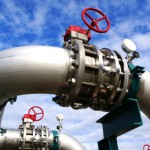 Football fans know the value of a hat-trick – the triumvirate of goals that prove success for any striker. Though difficult to achieve, the hat-trick is worth striving for.
Football fans know the value of a hat-trick – the triumvirate of goals that prove success for any striker. Though difficult to achieve, the hat-trick is worth striving for.
The European Renewable Energy Council (EREC) also wants to score a hat-trick. Their new publication proposes three targets to drive EU energy policy after 2020: renewable energy, greenhouse gas emissions and energy efficiency.
“This would yield more benefits for European citizens and industries than a one-legged policy” based on a greenhouse gas only approach, say EREC.
“The message is simple: if you want to lower costs, create jobs, replace fossil fuel imports and drive innovation, competitiveness and investment, then a hat-trick of climate and energy goals works best”, said Rainer Hinrich-Rahlwes, President of EREC.
 While the wind industry will never face the equivalent of a Deepwater oil spill or a Fukushima nuclear catastrophe, its spectacular growth rates over the last decade do mean there are more health and safety hazards.
While the wind industry will never face the equivalent of a Deepwater oil spill or a Fukushima nuclear catastrophe, its spectacular growth rates over the last decade do mean there are more health and safety hazards.
An electrical fire can occur; heavy parts can fall from great heights; lifting huge unstable loads with cranes could go wrong; transferring workers from vessels to an offshore turbine in wavy conditions could be dangerous and, when an accident occurs in a remote wind farm, rescue can take longer.

New York City
Wind energy could play a major role in providing all the power needed for the entire state of New York by 2030, according to a new academic study.
New York’s power demand for all sectors in 17 years time could be met, in part, by 4,020 onshore 5-megawatt wind turbines and 12,770 offshore 5-MW machines, the study by researchers from Cornell, Stanford and the University of California-Davis found.
Harnessing power from water and sunlight would also be part of the alternative energy plan for New York, which has close to 20 million people and is the third most populated state in the US.
“Converting to wind, water and sunlight is feasible, will stabilize costs of energy and will produce jobs while reducing health and climate damage,” study co-author Mark Jacobson, a professor of civil and environmental engineering at Stanford, was quoted as saying.
 A report published by Citibank, a major international bank, has found that the future of shale gas in Europe is shrouded in uncertainties and the energy technology may not be as viable as had been previously claimed.
A report published by Citibank, a major international bank, has found that the future of shale gas in Europe is shrouded in uncertainties and the energy technology may not be as viable as had been previously claimed.
The same report found that renewables will cost the same as conventional fuels (including gas) in many parts of the world in the very near term. “The cost of renewables is falling fast,” it said.
The Citibank report, first published in September 2012, says that in Europe shale is likely to be particularly challenging to extract, leading to a higher than predicted level of uncertainty surrounding the industry’s future. “Even if shale gas resources are as large as initially reported, it is unknown to what extent shale gas will be recoverable in practice,” it said.
Poland – a country which rushed to develop its shale gas reserves in 2007 – proves this point, as “producers have so far failed to establish a viable shale gas industry, despite 112 exploration licences having been issued,” the report says.
 Yesterday the European Parliament voted against a proposal to delay the auctioning of 900 million tonnes of carbon allowances in the EU’s Emissions Trading System (ETS) – a move proposed by the European Commission to rescue the ailing ‘cornerstone’ system of Europe’s climate legislation which puts a price on carbon emissions.
Yesterday the European Parliament voted against a proposal to delay the auctioning of 900 million tonnes of carbon allowances in the EU’s Emissions Trading System (ETS) – a move proposed by the European Commission to rescue the ailing ‘cornerstone’ system of Europe’s climate legislation which puts a price on carbon emissions.
As a result, the European Voice reported that the price of carbon plummeted 45% to a record low of €2.63. The ETS system was designed around a carbon price of approximately €20, but an over-allocation of allowances and the economic crisis has meant the price of carbon has been around €7 per tonne in recent years – not expensive enough to make it a disincentive to invest in carbon polluting industries like fossil fuels.
“MEPs have voted against the polluter pays principle: the carbon price will continue having no impact on investment decisions in the power sector,” Rémi Gruet, Senior Climate Advisor at EWEA, said.
 Football fans know the value of a hat-trick – the triumvirate of goals that prove success for any striker. Though difficult to achieve, the hat-trick is worth striving for.
Football fans know the value of a hat-trick – the triumvirate of goals that prove success for any striker. Though difficult to achieve, the hat-trick is worth striving for.






 Comments
Comments



